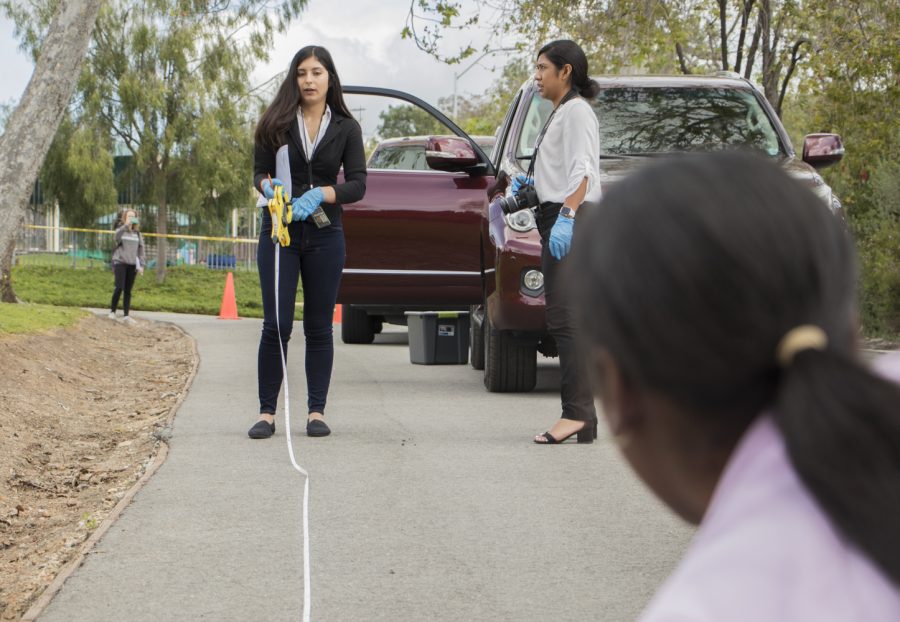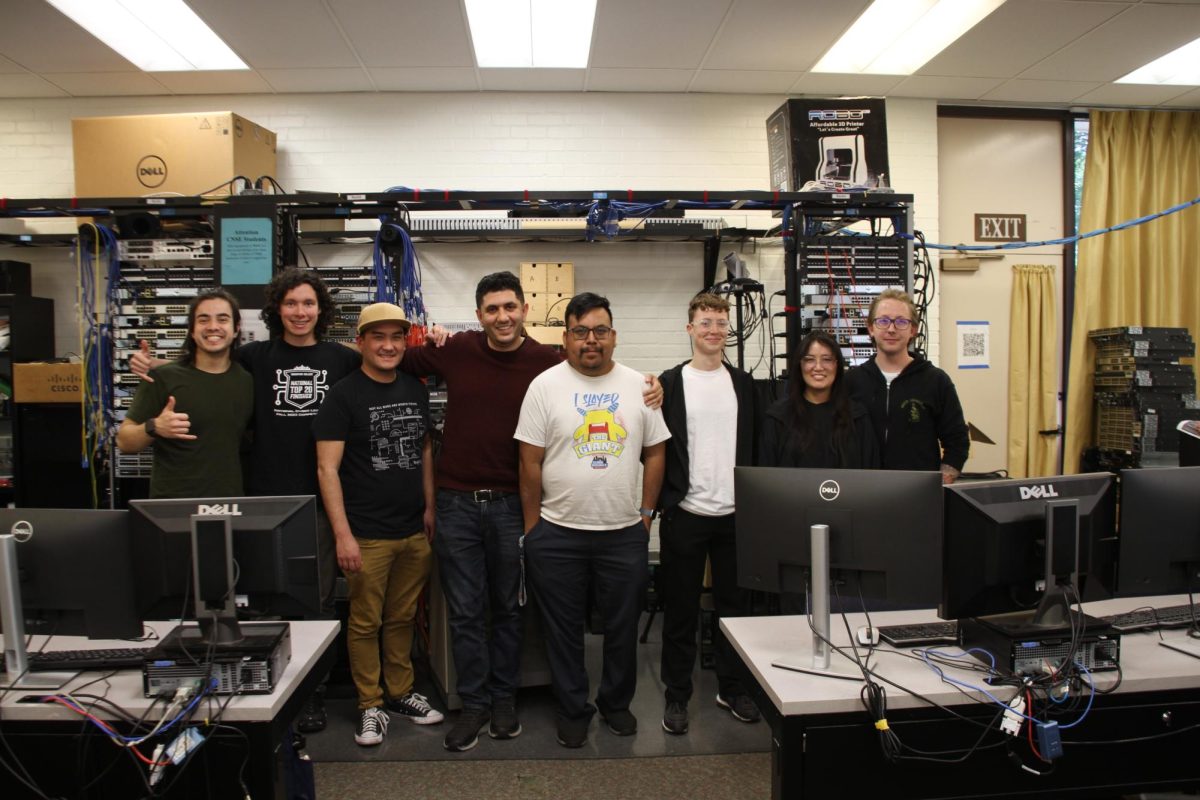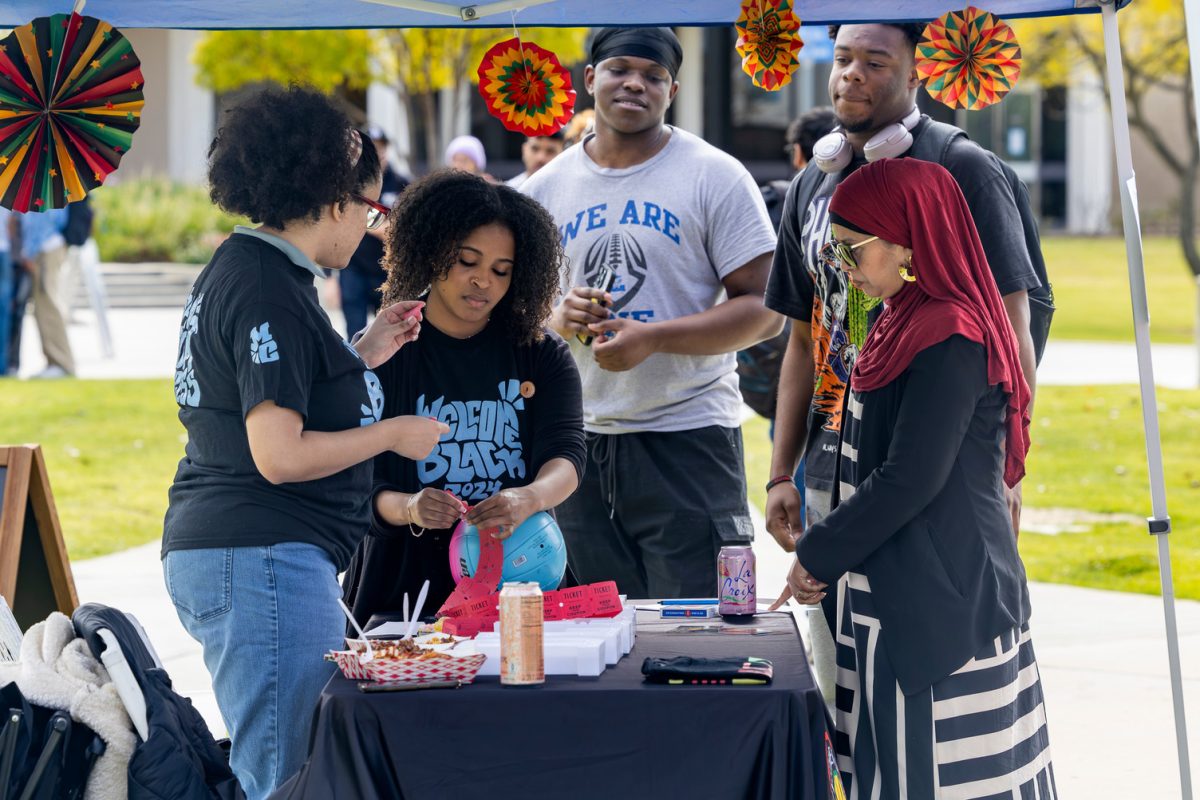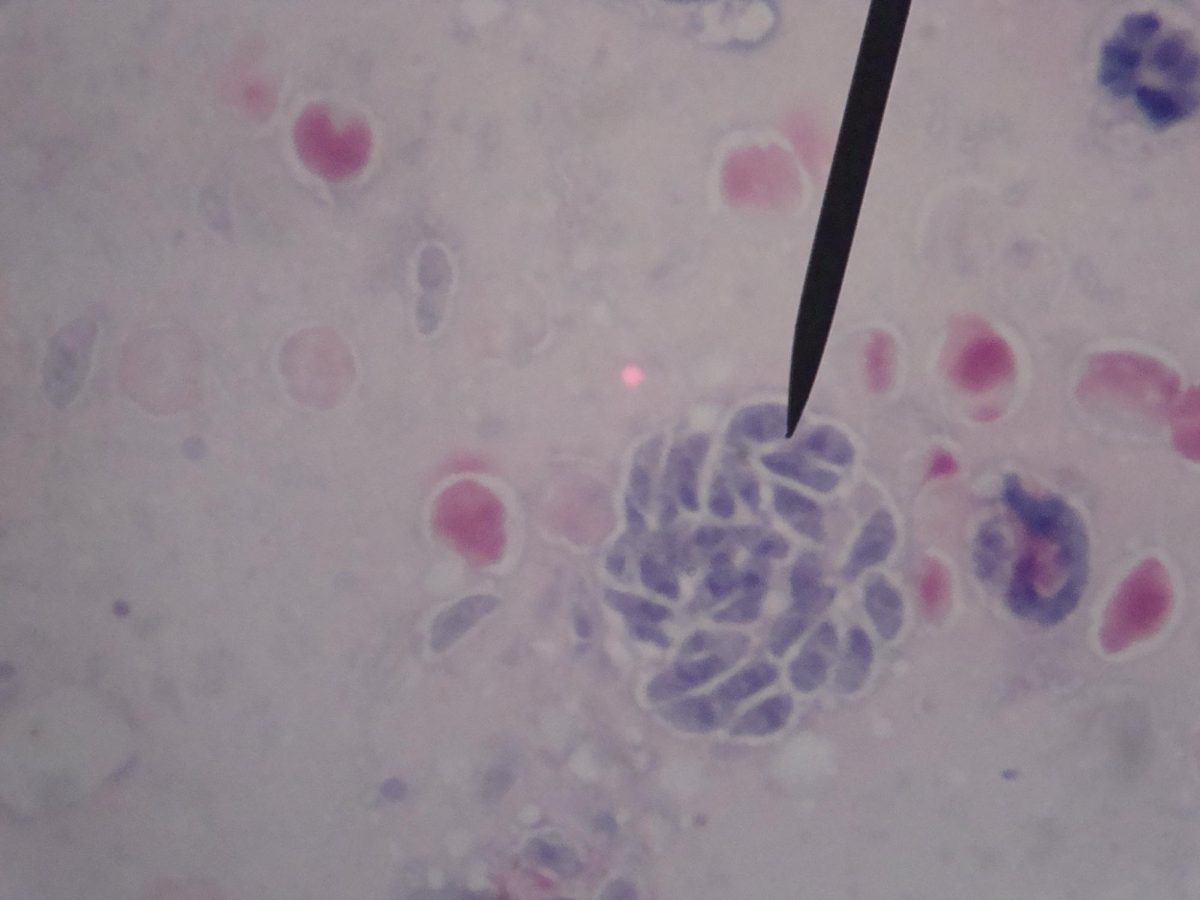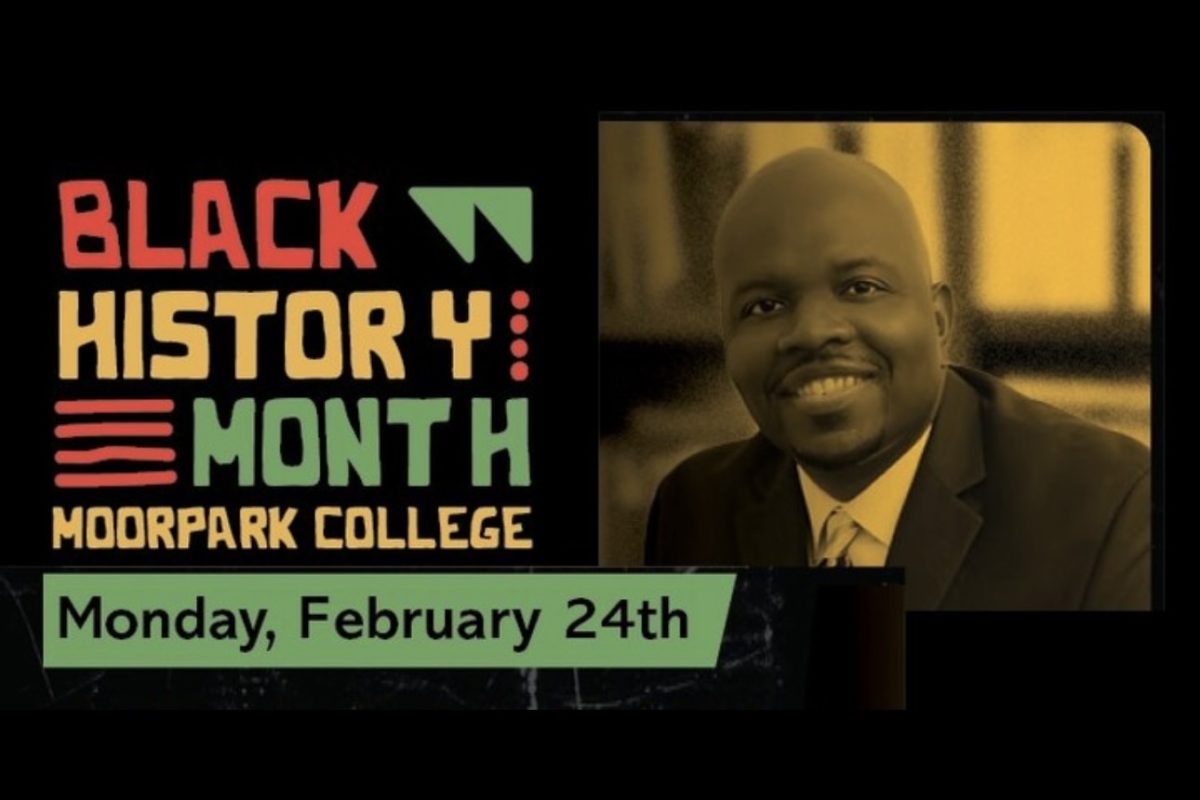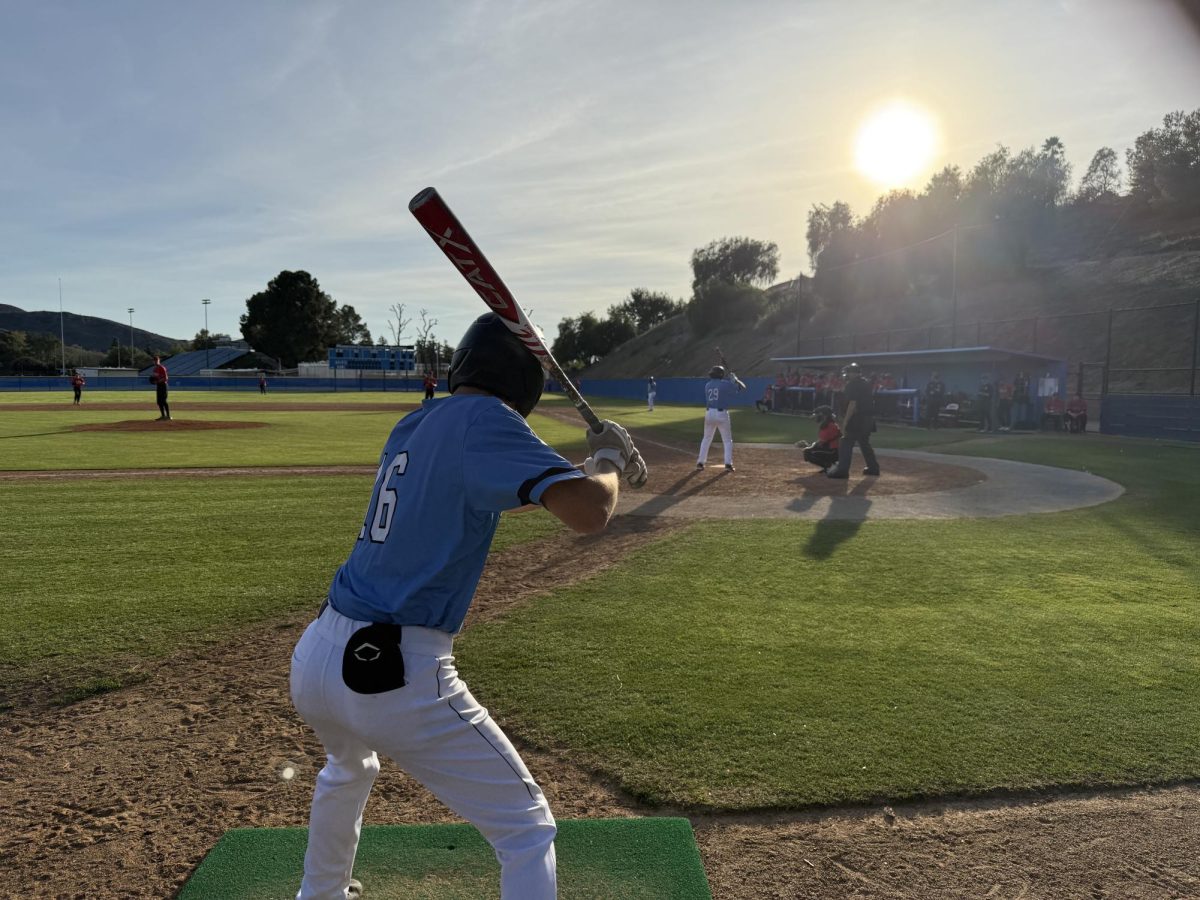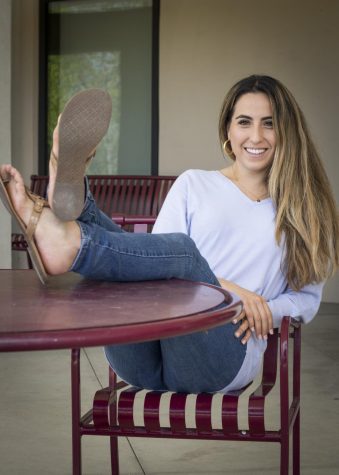The criminal justice department staged a mock crime scene in front of the Academic Center’s parking lot on Tuesday, April 2. The goal of the class, CJ M11, is for students to get a hands-on experience of assessing a crime scene and compiling all the evidence in a ‘murder book’ that will count for 35 percent of their overall grade.
Nicholas Zingo, a criminal justice instructor and a 38-year veteran of the Los Angeles Police Department for the past five years set up a mock crime scene for his students. His students are in the role of detectives that “investigate” the simulated crime as an active learning exercise.
“Active learning is not teaching, it’s not lecturing, it’s where the students are engaged by the professor,” said Zingo. “You test [the student’s] existing knowledge and then you push them to learn more by engagement and by getting out of their chairs and doing it.”
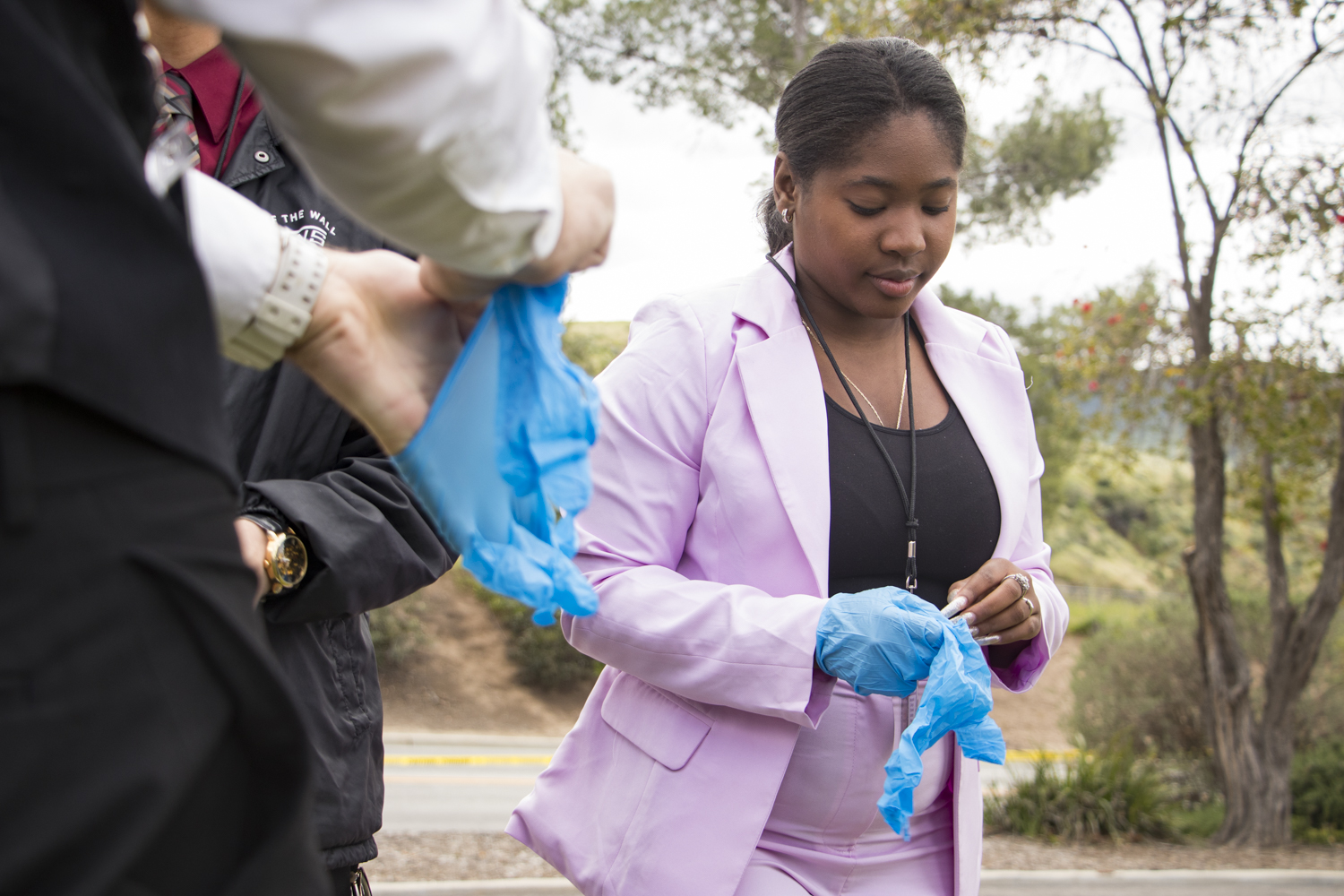
Zingo’s students were divided up into five teams and given 30 minutes to carry out their assigned detective duties. A mannequin with a fake bullet in its head was seated in the passenger seat of a Lexus GX-460. There were nine first responders in blue shirts maintaining the crime scene and six witnesses. Three of the witnesses were driving a brown Ford 150 truck and parked behind the victim’s car. The other three witnesses were in Manny Quinn’s car.
Student detectives recorded each piece of evidence. As part of the process, they properly tagged and took pictures of the evidence. Once the detective teams gathered all their information from the scene, they had the next few weeks to compile their evidence in the murder book. Zingo hopes his students take something away for this experience for the future.
“That nothing is what it appears to be. You have to do a thorough investigation; you need to know the beginning, middle, and end in order to put the pieces together to know what exactly occurred,” said Zingo. “And that’s for any type of criminal investigation including an officer-involved shooting in which an officer takes somebody else’s life.”
Criminal justice students weren’t the only ones involved in the crime; students from the theatre arts department acted out the scenario featuring Quinn’s grieving wife, witnesses, and the murderer. His wife was so emotional; she interfered with the investigation of the detectives by running back weeping to her staged dead husband.
Suzanne Fagan, professor of theatre arts has teamed up with Zingo’s mock crime scene for the past four years. Fagan’s students have a chance to practice their improvisational skills as they act out characters of the scene.
“This is very much how it is in TV and film. You’re at a crazy location. You’ve got to hurry up. Get ready. Get there on time. Then, you wait. On film, you wait for the crew and here you wait on Zingo. Then, action. Then, go, go, go. Cut. Reset for the next one,” said Fagan. “This is so like how it is in the film industry, one hundred percent. So it’s a really great experience.”
Moorpark College student Kevin Gutierrez, one of the lead detectives of the mock crime scene said communication is essential, which he admits his team needed during the investigation.
“Be well-informed throughout the investigation. Take notes and work as a team,” said Gutierrez. “Because sometimes it turns out that [your team is] under-prepared so it’s best to be over-prepared.”
Alexa Ramirez, 24 of Simi Valley, a former student of Zingo’s criminal justice class was one of the nine first responders at the crime scene. She also was the on-site ASL translator for one of the witnesses.
“Its crazy, its fun and stressful. You take on the roles of an officer,” said Ramirez. “Without this, we would never know [how to handle] the situation, even a fake situation so it opens your eyes and shows you what you are going to deal with.”
One final note from Professor Zingo to his students on the public’s view of a crime and how crucial it is to perform a comprehensive investigation.
“Not everybody knows what really occurs. They [the viewing audience] only know what the media feeds to them. Its like taking a video, you chop off the end and you chop off the beginning. You only feed them a little portion,” said Zingo. “Everything has to be taken into context.”

